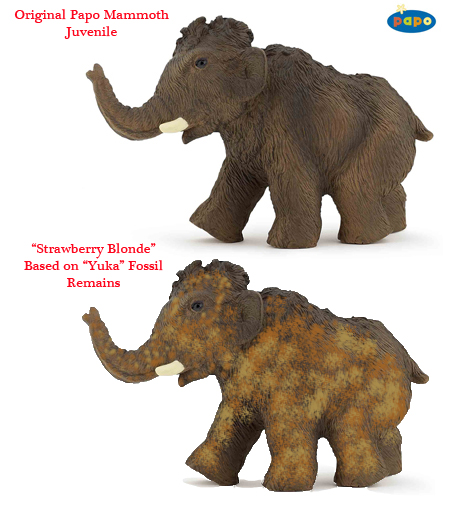Mammoths in the Cinema – 10,000 B.C. and all That
No prehistoric movie or television series seems complete without at least one Mammoth being included. Now that CGI has come to the fore, depicting these large elephants with their long shaggy fur coats is not too much of a problem. Although we have been told by technicians and CGI operators that getting the fur to look realistic on screen is quite a challenge, at least with dinosaurs (feathered ones excepted), the computer experts are not encumbered with these skin features and dinosaurs are to some extent a little easier to re-create.
Mammoths in the Cinema
From studies of the exceptionally well preserved Mammoths from Siberia, scientists have a fairly good understanding of how the hair on these creatures looked. The coat consisted of two basic layers, a coarse outer layer of guard hairs and an undercoat that helped insulate these animals from the cold. This is a typical adaptation to cold, harsh environments seen in many mammal species, both extinct and extant (around today).
The outer guard hairs were up to six times thicker than human hair and in large specimens some of these hairs grew to over a metre in length. This outer coat provided effective water-proofing. The inner coat was made up of thinner, softer and far shorter hairs this coat helped provide insulation and keep out the cold. The coat colour in Mammoths varies with some dark brown whilst others appear almost reddish/orange in colour. We have the frozen carcases of Siberian Mammoths to largely thank for providing us with a Mammoth colour chart.
Frozen Mammoth Carcases Provide a Guide to Mammoth Colouration
Picture credit: Everything Dinosaur
The picture (above) shows a model of a Papo juvenile Woolly Mammoth that has been altered digitally to show variation in colour. To view the Papo range: Papo Prehistoric Animal Models.
Many of the models Everything Dinosaur supplies are hand-painted. Each model has tiny variations which is very appropriate given that the structure and format of every Mammoth’s coat would have been slightly different – just as the hair on our heads is different from person to person.
To see a model of Woolly Mammoth and other prehistoric animal figures: Prehistoric Animal Models.
The degree of hairiness varied with the Mammoth species, Columbian types (Mammuthus columbi) were less hairy than the Woolly types (M. primigenius), perhaps an adaptation to a slightly less harsh climate. It is likely that Mammoths had a spring moult to produce a lighter summer coat.
Their heavy coats were not their only source of insulation, many Mammoth fossils have revealed a fat layer up to 10 cm thick just below the skin surface. This would have provided exceptional insulation, an example of adaptation to colder climates and a food store inside the animal to help it overcome leaner times.







Leave A Comment